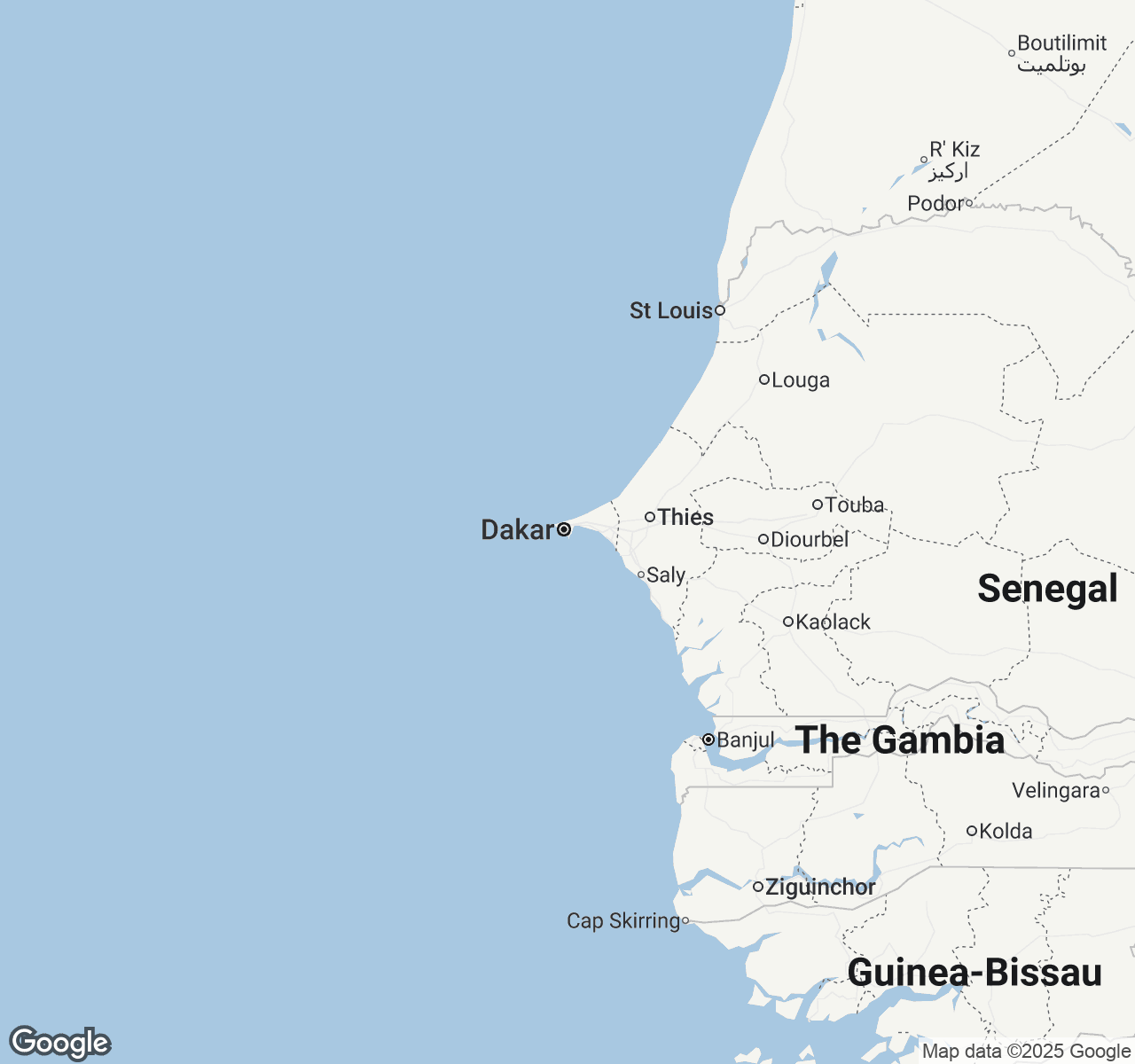
Things to Do in Dakar
Discover the best of Dakar
Plan Your Trip
Essential guides for timing and budgeting
Top Things to Do in Dakar
Discover the best activities and experiences. Book now with our trusted partners and enjoy hassle-free adventures.
Explore Destinations in Dakar
Your Guide to Dakar
About Dakar
Where the Atlantic Ocean kisses the westernmost shores of Africa, Dakar pulses with an intoxicating blend of French colonial elegance and busy West African soul. This cosmopolitan capital unfolds like a living tapestry, where the call to prayer mingles with jazz melodies drifting from seaside cafés, and colorful fabrics dance in ocean breezes at bustling markets. The city's peninsular perch creates a dramatic stage where red cliffs meet azure waters, while tree-lined boulevards lead to hidden corners where griots still tell ancient stories. Here, the rhythm of daily life moves to the beat of sabar drums and the gentle lapping of pirogues returning with the day's catch. Dakar's magnetic energy draws you into its embrace—whether you're savoring thieboudienne in a family-run restaurant, exploring the haunting beauty of Gorée Island, or watching the sun paint the sky crimson from the Corniche. This is a city that doesn't just welcome visitors; it transforms them, leaving each traveler with a piece of its unshakeable spirit.
Travel Tips
Transportation: Use official yellow taxis or ride-sharing apps like Yango for safe transport. Negotiate taxi fares before departure or insist on the meter. Car rapides (colorful buses) are authentic but crowded—keep valuables secure and ask locals for route guidance.
Money: The West African CFA franc is the local currency. ATMs are widely available in Dakar, but notify your bank beforehand. Carry cash for markets and small vendors. Credit cards work in upscale hotels and restaurants but aren't universally accepted.
Cultural Respect: Dress modestly, especially when visiting mosques—cover shoulders and knees. Remove shoes before entering homes or religious sites. Learn basic Wolof greetings like 'Asalaa malekum.' Friday prayers are sacred; avoid loud activities near mosques during this time.
Food Safety: Stick to busy local restaurants where food turnover is high. Try national dishes like thieboudienne and yassa poulet at family-run establishments. Drink bottled or filtered water. Fresh fruits you can peel yourself are generally safe, but avoid pre-cut varieties from street vendors.
When to Visit
Dakar's tropical climate offers distinct seasons that cater to different travel preferences. The dry season (November-May) is ideal for most visitors, with December through March being peak months featuring comfortable temperatures of 70-85°F and minimal rainfall. Expect hotel prices 30-40% higher during this period, especially around Christmas and New Year. April and May bring rising temperatures (80-90°F) but fewer crowds and 20% lower accommodation costs. The wet season (June-October) sees dramatic price drops of up to 50%, but humidity soars and heavy rains occur July through September, with August receiving the most precipitation (8-10 inches). However, rain often comes in short, intense bursts, leaving plenty of time for exploration. Cultural enthusiasts should time visits around the Saint-Louis Jazz Festival (May), Dak'Art Biennale of Contemporary Art (May, every two years), or the busy Tabaski celebration (dates vary by Islamic calendar). Budget travelers will find incredible value during the shoulder seasons of May-June and October-November, when temperatures moderate (75-85°F) and tourist infrastructure operates fully with reduced crowds. Surfers should visit November through March for optimal Atlantic swells.

Dakar location map